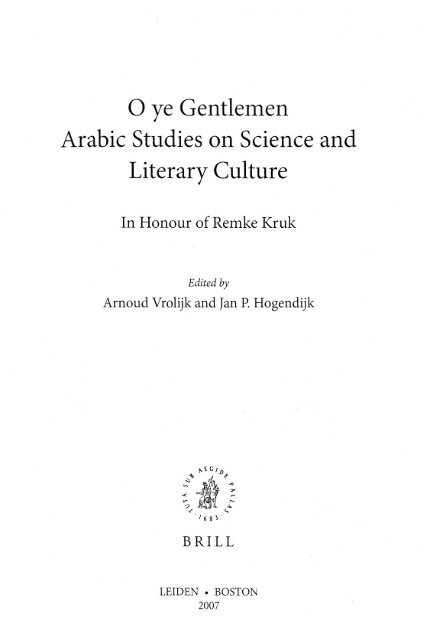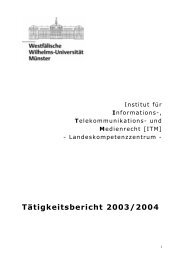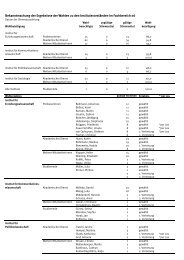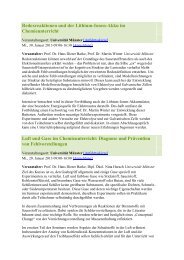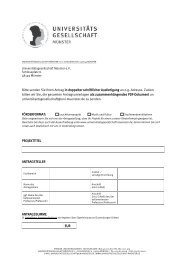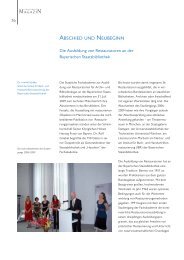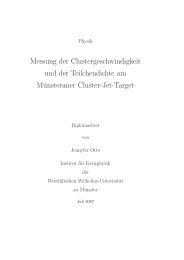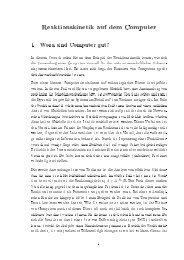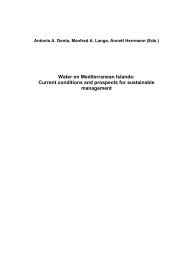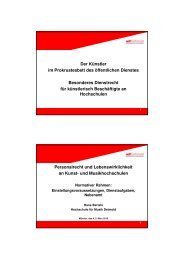oye GentleIllen Arabic Studies on Science and Literary Culture
oye GentleIllen Arabic Studies on Science and Literary Culture
oye GentleIllen Arabic Studies on Science and Literary Culture
Create successful ePaper yourself
Turn your PDF publications into a flip-book with our unique Google optimized e-Paper software.
o ye <str<strong>on</strong>g>GentleIllen</str<strong>on</strong>g><br />
<str<strong>on</strong>g>Arabic</str<strong>on</strong>g> <str<strong>on</strong>g>Studies</str<strong>on</strong>g> <strong>on</strong> <strong>Science</strong> <strong>and</strong><br />
<strong>Literary</strong> <strong>Culture</strong><br />
In H<strong>on</strong>our of RemkeKruk<br />
Editedby<br />
Arnoud Vrolijk <strong>and</strong> Jan P. Hogendijk<br />
BRILL<br />
LEIDEN . BOSTON<br />
2007
CONTENTS VB<br />
Ibn Khaldün, a Critical Historian at Work. The Muqaddima<br />
<strong>on</strong> Secretaries <strong>and</strong> Secretarial Writing 247<br />
Maaike van Berkel<br />
Die Literarisierung der Mamlukischen Historiografie.<br />
Versuch einer Selbstkritik 263<br />
Bernd Radtke<br />
LITERATURE<br />
Some Remarks <strong>on</strong> the Women's Stories in the Judeo- <str<strong>on</strong>g>Arabic</str<strong>on</strong>g><br />
al-Faraj ba'd al-Shidda by Nissim Ibn Shähin (990-1062) 277<br />
Arie Schippers<br />
The Dawädär's Hunting Party. A Mamluk muzdawija tardiyya,<br />
probably by Shihäb al-Din Ibn Fac;llAlläh 291<br />
Thomas Bauer<br />
Precious St<strong>on</strong>es, Precious Words. Al-Suyüti'sal-Maqäma<br />
al-yäqütiyya 313<br />
Geert Jan van Gelder<br />
'Welche Gärten uns umfangen. .: Three Poems by Friedrich<br />
Rückert, Translated from a Gotha Manuscript of the Sfrat<br />
al-Mujähidfn (al-Amfra Dhät al-Himma) 333<br />
Claudia Ott<br />
'Antar Overseas. <str<strong>on</strong>g>Arabic</str<strong>on</strong>g> Manuscripts in Europe in the Late<br />
18th <strong>and</strong> Early 19th Century 339<br />
.Maurits H. van den Boogert<br />
The Functi<strong>on</strong>(s) ofPoetry in the Arabian Nights. Some<br />
Observati<strong>on</strong>s 353<br />
Wolfhart Heinrichs<br />
Narrative <strong>and</strong> Performance. Shahrazäd's Storytelling as a<br />
Ritual Act 363<br />
Richard van Leeuwen
THE DAWÄDÄR'S HUNTING PARTY<br />
A MAMLUK MUZDAWIJA TARDIITA, PROBABLY BY SHIHÄB<br />
AL-DIN IBN FApL ALLÄH<br />
Thomas Bauer<br />
Mamluk hunting literature<br />
Since the dedicatee of the present volume has c<strong>on</strong>tributed so essentially<br />
to our knowledge about the birth <strong>and</strong> the generati<strong>on</strong> of animals, 1 I feel<br />
compelled to apologize for presenting a text that is so fundamentally<br />
preoccupied with the killing of animals: 'They emptied the sky from<br />
birds, <strong>and</strong> this provided for the utmost joy!' However, since Remke<br />
Kruk combines an interest in animals w;th an interest in the Mamluk<br />
period, I hope that despite the blood that will be shed in the following<br />
pages, this c<strong>on</strong>tributi<strong>on</strong> <strong>on</strong> hunting poetry in the Mamluk period will<br />
find favour in her eyes.<br />
The main purpose of the followingpages is to bring Mamluk hunting<br />
literature to the attenti<strong>on</strong> of historians of <str<strong>on</strong>g>Arabic</str<strong>on</strong>g> literature. So far, not<br />
even its mere existence has ever been recorded in the modern studies<br />
of the tardiyya.No article or m<strong>on</strong>ograph goes so far as to even menti<strong>on</strong><br />
what happened to this genre in the tlme after the fourth/tenth century.2<br />
But Kushäjim <strong>and</strong> Abü Firäs were not the last hunting poets in <str<strong>on</strong>g>Arabic</str<strong>on</strong>g><br />
literature. Rather, after the Umayyad <strong>and</strong> early Abbasid period (from<br />
Shamardal to Abü Nuwäs) <strong>and</strong> the middle Abbasid period (from Ibn<br />
al-Mu'tazz to the poets of the entourage of Sayf al-Dawla), the BaJ;1ri<br />
Mamluk period is a third heyday of <str<strong>on</strong>g>Arabic</str<strong>on</strong>g> hunting literature. During<br />
the seventh <strong>and</strong> eighth/thirteenth <strong>and</strong> fourteenth centuries, a c<strong>on</strong>siderable<br />
number of hunting texts, both in prose <strong>and</strong> poetry, were composed<br />
that are in no way inferior or less interesting than those of the earlier<br />
I To menti<strong>on</strong> <strong>on</strong>ly the articles Takwin, Tawallud <strong>and</strong> Waham in vol. X <strong>and</strong> XI of Encyclopaedia<br />
of Islam (New ed.) <strong>and</strong> the literature quoted there.<br />
2 See T. Seidensticker, 'Tardiyya: in Encyclopaedia of Islam (New ed.), X, pp. 223-224<br />
<strong>and</strong> J.E. M<strong>on</strong>tgomery, 'tardiyya (hunting poem): in T.S.Meisami & P. Starkey (eds.),<br />
Encyclopedia of <str<strong>on</strong>g>Arabic</str<strong>on</strong>g> literature (L<strong>on</strong>d<strong>on</strong> [etc.], 1998), II, pp. 759-760, <strong>and</strong> the titles<br />
menti<strong>on</strong>ed in the bibliographies of these articles.
292 THOMAS BAUER<br />
periods, whereas the two preceding centuries, more or less coinciding<br />
with the period of the so-called 'Sunni revival: c<strong>on</strong>stitute a crisis within<br />
hunting poetry, if not of <str<strong>on</strong>g>Arabic</str<strong>on</strong>g> poetry in general.<br />
But this situati<strong>on</strong> changed fundamentally after the Ayrubids <strong>and</strong>.<br />
Mamluks had establi~hed a stable rule over Syria <strong>and</strong> Egypt, where the<br />
civilian elite had thus appropriated the literary culture of the Abbasid<br />
kuttäb <strong>and</strong> where countless madrasas provided for a mass educati<strong>on</strong><br />
that made it possible .for popular literature to thrive with a hitherto<br />
unknown intensity. This development also brought about a new (last?)<br />
blossoming of <str<strong>on</strong>g>Arabic</str<strong>on</strong>g> hunting literature, which may have been initiated<br />
by the Ayrubid dynasty itself,3but reached its apogee a few decades later.<br />
During the short period examined here, the end of the seventh/thirteenth<br />
<strong>and</strong> the first half of the eighth/fourteenth century, a c<strong>on</strong>siderable<br />
number of texts <strong>on</strong> hunting were produced, covering all forms oE.<br />
the tardiyya known so far <strong>and</strong> even forms hardly used for this purpose<br />
before. Especially remarkable is the great number of prose text in the<br />
form of a risäla 'epistle: either called risä14tardiyya or ~aydiyya'hunt-<br />
(<br />
ing epistle' or, with a .more specificsubject) risälabunduqiyya 'epistle <strong>on</strong><br />
hunting (birds) with the crossbow:Thehunting risiilareached the height<br />
of its popularity in the Mamluk period, but it had been created much<br />
earlier. The earliest hunting epistle known so far is by 'Abd al-I:Iamid<br />
al-Kätib (d. after 132/750).4Later)epistles of this kind were written by<br />
Ibrähim b. Hiläl al-$äbi' (313-384/925-994)5 <strong>and</strong> Hiläl b. al-Mul;1assin<br />
al-$äbi' (359-448/969-1056).6 Another author of a risiila bunduqiyya<br />
from Ayrubid times is ]?iyä' al-Din Ibn al-A~ir (558-637/1163-1239).7<br />
Further texts are menti<strong>on</strong>ed by Hämeen -Anttila. 8<br />
The following literary hunting texts date from the sec<strong>on</strong>d half of the<br />
seventh <strong>and</strong> the first half of the eighth century:<br />
3 .A chapter of tardiyyät comprising two qasidas can be found am<strong>on</strong>g the poetry of the<br />
Ayyubid Sultan al-Malik al-Nä~ir $aläl).al-Din Däwüd (603-657/1205-1259), see 'Abd<br />
al-l:Iasanayn al-Kha
THE DAWÄDÄR'S HUNTING PARTY 293<br />
1. Siräj al-Din al-Warräq (615-695/1218-1296): A muzdawija tardiyya.9<br />
2. Mulfyi 'I-Dm Ibn 'Abd al-Zähir (620~692/1223-1292): A risäla<br />
~aydiyya. 10 .<br />
3. Kamäl al-Din Ibn al-'Attär (626-702/1228 or 1229-1303): A risäla<br />
bunduqiyya.11<br />
4. Shihäb al-Din Malfmüd (644-725/1246-1325): A l<strong>on</strong>g <strong>and</strong> famous<br />
risäla bunduqiyya12 <strong>and</strong> a risäla tardiyya.13 .,<br />
5. Shihäb al-Dm Mulfammad Ibn al-~ä'igh (645-ca. 722/1247-ca. 1322):<br />
A risälabunduqiyya<strong>and</strong> a mukhammasa <strong>on</strong> the samesubject, addressed<br />
t€>~alälf al-Din b. Mulfyi 'I-Dm Ibn Fa
294 THOMAS BAUER<br />
9. The text to be presented here can be attributed to Shihäb al-Dih A.l;1mad<br />
Ibn Fac;llAlläh (700-749/1301-1349) with a sufficient amount of probability.<br />
It is an urjüza muzdawija in the traditi<strong>on</strong> of Siräj al-Dm al-<br />
Warräq.<br />
The dawädär Nä~ir al-Din, the governor Tankiz, <strong>and</strong> the Syrian hunt<br />
A hunting poem or a huntmg risäla could not be created until several<br />
c<strong>on</strong>diti<strong>on</strong>s were fulfilled.~1) A rich <strong>and</strong> mighty pers<strong>on</strong>ality arranges<br />
sumptuo~s hunting expediti<strong>on</strong>s that are worthy of immortalizati<strong>on</strong> in<br />
the form of a literary work. (2) This pers<strong>on</strong> or another equally important<br />
pers<strong>on</strong> from his entourage, who also takes part in these excursi<strong>on</strong>s, has<br />
a good comm<strong>and</strong> of <str<strong>on</strong>g>Arabic</str<strong>on</strong>g> <strong>and</strong> is interested in <str<strong>on</strong>g>Arabic</str<strong>on</strong>g> literature. (3) A<br />
writer of poems <strong>and</strong>l.orprose literature isinterested in dedicating a literary<br />
portrayal of the hunt to this pers<strong>on</strong>, <strong>and</strong> even more cogently if the<br />
writer is allowed to take part in the hunt himself. (4) There is a broader<br />
general public that is interest~d in literary texts about hunting. Otherwise<br />
the genre of the tardiyya loses its relevance <strong>and</strong> neither patr<strong>on</strong>. nor<br />
poet will expend any effort <strong>on</strong> .the creati<strong>on</strong> of a new text. The absence<br />
,of<strong>on</strong>e of these prec<strong>on</strong>diti<strong>on</strong>s helps to explain the disc<strong>on</strong>tinuities _in the<br />
history of <str<strong>on</strong>g>Arabic</str<strong>on</strong>g> hunting literature.<br />
At the time of the creati<strong>on</strong> of Shihäb al-Dms muzdawija, spectacular<br />
hunting safaris were c<strong>on</strong>ducted by the Sultan himself, by his governors<br />
or, more rarely, by other,leading Mamluk amirs.20For the Tur~sh<br />
Mamluks,_the hunt offered an opportunity to practise military skills in<br />
a time of peace. But c<strong>on</strong>trary to Ibn Tughj, Sayf al-Dawla <strong>and</strong> 'A4ud<br />
al-Dawla, to whom al-Mutanabbi, Abü Firäs <strong>and</strong> their c<strong>on</strong>temporaries<br />
directed their hunting poems, these Mamluks had little if any interest in<br />
<str<strong>on</strong>g>Arabic</str<strong>on</strong>g> p~etry. By <strong>and</strong> large, architecture had taken the representative<br />
functi<strong>on</strong> that poetry had fulfilled during the Abbasid period, <strong>and</strong> many<br />
amirs did not have enough comm<strong>and</strong> of the <str<strong>on</strong>g>Arabic</str<strong>on</strong>g> language to enjoy<br />
the subtleties of c<strong>on</strong>temporary literature.On the other h<strong>and</strong>, poetry<br />
had acquired new functi<strong>on</strong>s as a privileged means of communicati<strong>on</strong><br />
between the 'ulamä' <strong>and</strong> an opportunity to distinguish <strong>on</strong>eself, to show<br />
<strong>on</strong>e'smastery of the <str<strong>on</strong>g>Arabic</str<strong>on</strong>g> language <strong>and</strong> the aesthetic code ofliterature,<br />
20 See Nabn Mul)ammad CAbdal-'Aziz, Riyäejat al-~aydfi '~r salätin al-Mamälik<br />
(Cairo, 1999), pp. 127-203.
THE DAWÄDÄR'S HUNTING PARTY 295<br />
<strong>and</strong> thus to prove worthy to be induded am<strong>on</strong>g the creme of the cultivated<br />
civilian elite. As a c<strong>on</strong>sequence, the time-h<strong>on</strong>oured genre of<br />
panegyric poetry (madfhJ could survive, but in a more bourgeois form<br />
as literature directed by <strong>on</strong>e 'älim to another 'älim in a communicative<br />
exchange <strong>on</strong> the same social <strong>and</strong> intellectuallevel. For hunting texts,<br />
the situati<strong>on</strong> was more complicated, since more often than not (1) the<br />
leader of the hunting expediti<strong>on</strong>, <strong>and</strong> (2) the pers<strong>on</strong> interested in hunting<br />
literature were not <strong>on</strong>e <strong>and</strong> the same pers<strong>on</strong>. A major excepti<strong>on</strong> is al-<br />
Malik al-Af
296 THOMAS BAUER<br />
Given the fact that the hunt was led by a pers<strong>on</strong> who had little interest<br />
in literature <strong>and</strong> that the most significant literary competence had<br />
been assembled in the diwän al-inshä', a crucial role came to be played<br />
by pers<strong>on</strong>s who held an officethat combined competence in the realm<br />
of the civil elite with power in the realm of the military elite. An office<br />
in this intermediate positi<strong>on</strong> was the vizier, in this time identical with<br />
the nä~ir al-diwän, 'supervisor of the chancellery: Another office even<br />
doser to the military was the dawädär, the 'bearer of the royal inkwell:<br />
His duties <strong>and</strong> his importance varied a great 'deal over time. The holders<br />
of these officeswere dose enough to the amirs to take part in their<br />
hunting expediti<strong>on</strong>s side by 'sidewith the amirs <strong>and</strong> dose enough to the<br />
kuttäb to be interested in sophisticated literature <strong>and</strong> pay attenti<strong>on</strong> to<br />
communicati<strong>on</strong> by means of poetry <strong>and</strong> artistic prose.<br />
The first urjüza muzdawija of the Mamluk period was composed by<br />
al-Warräq for the vizier al-$äl:1ibTäj al-Din Ibn l:finnä <strong>and</strong> his brother. 25<br />
Shihäb al-Din Ibn Fa
THE DAWÄDÄR'S HUNTING PARTY 297<br />
is a Mufäkhara bayna 'l-Sayf wa 'l-Qalam 'Debate between the Sword<br />
<strong>and</strong> the Pen: first dedicated to al-Mu'ayyad. He accompanied his s<strong>on</strong> al-<br />
Man~ür <strong>on</strong> <strong>on</strong>e ofhis hunting safaris <strong>and</strong> immortalized it in his hunting<br />
urjuza. However,Ibn Nubäta was also in dose c<strong>on</strong>tact with the qiwän alinshä'<br />
of Damascus, especia11ywith the Banü Fa
298 THOMAS BAUER<br />
Not visible in the chart is the general public, which is n<strong>on</strong>etheless<br />
always present in the mind of both poet <strong>and</strong> addressee. As the many<br />
sources for Ibn Nubäta's hunting urjüza show, the literary public of the<br />
time had a vivid interest in hunting literature of this kind. Ibn Nubäta's<br />
muzdawija was praised as a model for insijäm 'fluency?l This fluency is<br />
without doubt alsd prominent in the poem by Ibn Fa
THE DAWÄDÄR'S HUNTING PARTY 299<br />
low. At the very end of the page, the writer added another headline,<br />
saying: al-Mawlä al-Shaykh al-Imam al-Adib al-Fäqil]amäl al-Din Abü<br />
'AbdAlläh b.al-Shaykhal-Imäm al-Mu~addith Mu~ammad Ibn Nubäta.<br />
The words 'Ibn Nubäta' are crossed out <strong>and</strong> substituted by the words<br />
'Mu~yi '1-Din FaqlAlläh'. This error can be explained by the following<br />
hypothesis: The urjüza is still part of the secti<strong>on</strong> comprising texts by al-<br />
Shihäb Ibn Fac;llAlläh. The writer, however, realised that the following<br />
text is a hunting urjüza. At this time, the most famous hunting urjüza,<br />
was, of course, Ibn Nubäta's poem, a text that is also induded in this<br />
very collecti<strong>on</strong> a few pages later. Further, the writer must have realised<br />
that severalleaves of his source were in disorder. This is very obvious in<br />
the text of al-Qatr al-Nubäti. Obviously, he thought that Ibn Nubäta's<br />
hunting urjüza had already started even in these earlier pages. Therefore<br />
he added the headline appropriate for this text. Later, perhaps when he<br />
reached f. 47b, he realised his error. On that page, Ibn Nubäta's urjüza<br />
begins, <strong>and</strong> it is introduced with exactly the same headline as the bottom<br />
of f. 42a.Having realised his error, the writer crossed out the words<br />
'Ibn Nubäta' <strong>and</strong> substituted them with the last words of the headline at<br />
the top of the page. Even so, he still did not realise that not <strong>on</strong>ly the end<br />
of the headline was wr<strong>on</strong>g, but also its beginning. I c<strong>on</strong>jecture that the<br />
original headline at this place was either a simple wa-Iahü (ayqan) or a<br />
repetiti<strong>on</strong> of the headline at the top of the page. The writer of the title<br />
page, which c<strong>on</strong>tains a list of the principle texts indud:ed in the Tadhkira,<br />
refers to our text as Urjüzat Ibn Faql Alläh fi 'l-$ayd.<br />
This is corroboratedby internal criticism. The poem presented here<br />
cannot be a work of Ibn Nubäta. A comparis<strong>on</strong> betweenthis poem <strong>and</strong><br />
Ibn Nubätas Farä'id al-Sulük reveals aldear stylistic c<strong>on</strong>trast. Whereas<br />
Ibn Nubäta repeatedly uses the tawriya (double entendre), this stylistic<br />
device hardly plays a role in the urjüza published here. Instead, its<br />
author makes ample use of aBkinds ofjinäs. This corresp<strong>on</strong>ds exactly<br />
to what we are told by Ibn I:Iijjaal-I:Iamawi,who menti<strong>on</strong>s al-Shihäb<br />
Ibn Fac;llAlläh am<strong>on</strong>g the poets who possess no virtuosity in the field<br />
of the tawriya <strong>and</strong> make <strong>on</strong>ly sporadic use of it.34In favouring jinäs<br />
instead of the tawriya, his style is doser to that of al-I:Iillithan to that<br />
of Ibn Nubäta. Other sources corroborate that the urjüza is a literary<br />
34 Ibn I:Iijja,Khizänat al-adab, III, p. 522.
300 THOMAS BAUER<br />
form that was practiced by Shihäb al-Din. Though he menti<strong>on</strong>s no titles,<br />
al-$afadi explicitly states that al-Shihäb is the author of 'many qasidas,<br />
rajaz poems, epigrams <strong>and</strong> dübayts:35<br />
Finally, Ibn Fa41Alläh's relati<strong>on</strong> to the dawädär that resulted from<br />
his positi<strong>on</strong> in the diwän al-inshä' <strong>and</strong> his place in the literary system of<br />
his period, as sketched above, make hirn the most likely c<strong>and</strong>idate for<br />
the authorship of the urjüza. The most probable dates for its creati<strong>on</strong><br />
would be the years 727-729 <strong>and</strong> 732-733, when Shihäb al-Din acted as<br />
. a deputy for his aging father, the officialkätib al-sirrof Damascus.<br />
Shihäb al-Din Ibn Faq.l Alläh as a poet.<br />
In Western sources, the author to whom the muzdawija can be attributed<br />
is normally called 'Ibn Fa41Alläh al-'Umarf But there were more<br />
famous members of the Banü Fa41Alläh, including his father Mul}.yi<br />
'l-Din <strong>and</strong> his younger brother 'Alä' al-Din. Therefore, it is appropriate<br />
to use no other form ofhis namerthan the form used in all c<strong>on</strong>temporary<br />
sources, Shihäb al-Din (or al-Shihäb) Ibn Fa41Alläh. Today, Shihäb al-<br />
Dills manual <strong>on</strong> penmanship (al-Ta'rifbi 'l-Mu~talahal-Sharif) <strong>and</strong> his<br />
encyclopaedia Masälik al-Ab~ärare used as essential sources for the history<br />
of the period. But his c<strong>on</strong>temporaries saw Shihäb al-Din principally<br />
as a man of letters, an author of poetry <strong>and</strong> prose literature. Paradoxically,his<br />
achievements in the field of literature are not even menti<strong>on</strong>ed<br />
in the entry <strong>on</strong> hirn in the Encyclopediaof <str<strong>on</strong>g>Arabic</str<strong>on</strong>g> Literature.36For al-<br />
$afadi, however, mir author was the imäm ahl al-ädäb?7According to<br />
this statement, al-Shihäb Ibn Fa
THE DAWÄDÄR'S HUNTING PARTY 301<br />
poetry, though there is a light reserve here. Whereas in prose nobody<br />
can ever attain his level, he says, in his poetry '<strong>on</strong>ly single poets' (alafräd)<br />
can equal him.39Another c<strong>on</strong>temporary, the scholar Täj al-DIn<br />
al-SubkI,leavesno doubt that Ibn Nubäta is unassailable both in poetry<br />
<strong>and</strong> prose.40But in another place he tries to promote Ibn Qä
302 THOMAS BAUER<br />
Structure <strong>and</strong> c<strong>on</strong>tent OfShihäb al-Din's muzdawija tardiyya<br />
The structure ofthe poem is clear-cut <strong>and</strong> well-balanced. The poem may<br />
be said to c<strong>on</strong>sist of three parts, each part divided into two subsecti<strong>on</strong>s.<br />
The first part starts with an introductory secti<strong>on</strong> of \ eleven couplets, priniarily<br />
of a descriptive nature. The sec<strong>on</strong>d secti<strong>on</strong>, the 'parade of the<br />
horses: is again a descriptive secti<strong>on</strong> <strong>and</strong> again comprises eleven lines.<br />
The central secti<strong>on</strong> of the poem is c<strong>on</strong>stituted by two hunting episodes<br />
that combine both descriptive <strong>and</strong> narrative elements. Each of these secti<strong>on</strong>s<br />
has the length of twelve couplets. A transiti<strong>on</strong> of five lines, the<br />
takhallu~,leads up to the c<strong>on</strong>cluding panegyric secti<strong>on</strong>, which with its<br />
thirteen lines is again <strong>on</strong>e couplet l<strong>on</strong>ger than the central secti<strong>on</strong>s. A<br />
chart may illustrate this structure:<br />
Lines Subject Length<br />
1-11<br />
1-3: frame: address to the audience;<br />
4-11: descripti<strong>on</strong> of nature<br />
12-22 the huntsmen <strong>and</strong> their horses: 'parade of the horses' 11<br />
23-34 episode 1: hunting gazelIes <strong>and</strong> <strong>on</strong>agers with arrows, dogs 12<br />
<strong>and</strong> cheetahs<br />
35-46 episode 2: hunting birds with falc<strong>on</strong>s <strong>and</strong> the crossbow 12<br />
47-51<br />
takhallu: return from the hunt; transiti<strong>on</strong> to the<br />
panegyric secti<strong>on</strong> '<br />
52-64 praise (madi) of the dawädär 13<br />
(1) lntroducti<strong>on</strong> <strong>and</strong> descripti<strong>on</strong> of nature. With its reference to surür<br />
'joy' the first couplet may allude to the urjüza muzdawija by Abü Firäs<br />
al-I;Iamdäni (320-357/932-968), in which we read al-'umru mä tamma<br />
bihi l-surüru 'life is when joys are complete:44But there are <strong>on</strong>ly few<br />
similarities between both poems, apart from their form. Abü Firäs's<br />
poem, for instance, is more than twice as l<strong>on</strong>g as Shihäb al-Din's. C<strong>on</strong>sequently,<br />
Shihäb al-Din cannot give as detailed arecord of the events<br />
44 Diwän Abi Firäs, ed. Sämi al-Dahhän, (Beirut, 1944),III, p. 435. See also James<br />
E. M<strong>on</strong>tgomery,'AbüFiräs'sVeneric Urjüzah Muzdawijah: <str<strong>on</strong>g>Arabic</str<strong>on</strong>g> <strong>and</strong> Middle Eastern<br />
literatures 2 (1999),pp. 61-74.<br />
11<br />
5
THE DAWÄDÄR'S HUNTING PARTY 303<br />
of the hunt as Abü Firäs. Further, Mamluk authors seem interested less<br />
in a narrati<strong>on</strong> of events than in an endeavour to transform the events<br />
into a sequence of literary images. In any case, the aesthetics of Mamluk<br />
literature were less dependent <strong>on</strong> their Abbasid predecessors than is<br />
often assumed. Shihäb al-Dills principal model as regards structure <strong>and</strong><br />
stylewas not that of A:büFiräs,but Siräjal-Din al-Warräq. This is clearly<br />
dem<strong>on</strong>strated by the lines that followthe frame motive of the first three<br />
couplets, the descripti<strong>on</strong> of nature. Nearly all Mamluk hunting texts,<br />
both poetry <strong>and</strong> prose, start with a descripti<strong>on</strong> of an idyllicl<strong>and</strong>scape in<br />
the early .morning light before sunrise.<br />
(2) Theparade of the horses. The background of time <strong>and</strong> place is set<br />
now <strong>and</strong> the attenti<strong>on</strong> turns to the protag<strong>on</strong>ists, the huntsmen <strong>and</strong> their<br />
horses. The hunters are introduced <strong>on</strong>ly briefly. The greater part of the<br />
paragraph is dedicated to a very popular motive of Ayyubid <strong>and</strong> Mamluk<br />
literature, which I call
304 THOMAS BAUER<br />
wa-huwa al-akhtabu lawni wajhihi wa-udhunayhi wa-manäkhirihi.47<br />
Other shades of dark mayaiso be subsumed under the term adham. The<br />
difference between ashqar <strong>and</strong> ahmar/kumayt is explained by al-BastI<br />
as follows:<br />
~I{0~J..:üi~ ~i} ~..;=-i~I{01!~.:J~ J ~~ J..:ü~~~\ Lf.!J.;J~<br />
48.~ ~ ..) i<br />
~ ~ \J.o 'Y"'"<br />
This is exactly the difference between the bay with its black mane, tail,<br />
<strong>and</strong> points, <strong>and</strong> the chestnut. Five of our nine authors differentiate<br />
between both. Dappled horses may be reck<strong>on</strong>ed am<strong>on</strong>g the <strong>on</strong>e or the<br />
other colours according to the dominating colour. This is the reas<strong>on</strong><br />
why <strong>on</strong>ly three of our authors treat ablaq as a category of its own.<br />
The following chart lists the horse colours (note that kumayt =<br />
ahmar) portrayed in nine 'parades' of the late Ayyubid <strong>and</strong> the early<br />
Mamluk period. The lines are arranged according to the date of birth<br />
of the author. The numbers indicate the sequence in which the different<br />
colours are treated.<br />
--<br />
ashhab adham akh
Table (c<strong>on</strong>t.)<br />
THE DAWÄDÄR'SHUNTING PARTY 305<br />
-<br />
ashhab<br />
adham akh
306 THOMAS BAUER<br />
(4) 1he sec<strong>on</strong>d hunting episode.A hunt with the crossbow <strong>and</strong> hunting<br />
birds (sakers <strong>and</strong> goshawks) follows.This form of the hunt was also<br />
the subject of the rasä'il bunduqiyya that were so popular in these days.<br />
The episode in this muzdawija is of a predominantly narrative character.<br />
Descriptive lines are dedicated to the crossbow (line 37) an,dthe hunting<br />
birds (lines 41-42). The hunted birds) which are described in detail in<br />
the risäla bunduqiyya by Ibn al-'Attär)are menti<strong>on</strong>ed <strong>on</strong>ly in the act of<br />
fleeing (line 40) <strong>and</strong> no further descripti<strong>on</strong> is(dedicated to them. The<br />
first verse of couplet 45 is a near verbatim quotati<strong>on</strong> of-al-Warräq) line<br />
17a: .J~ ,f -*\ ~ J.>b ... .58The reference to the sunset in line 46<br />
closes the time frame that was opened in the first paragraph with the<br />
descripti<strong>on</strong> of the daybreak. This does not necessarily mean that the<br />
hunt lasted a single day <strong>on</strong>ly. Instead) it is quite probable that hunting<br />
expediti<strong>on</strong>s of this kind extended over more than <strong>on</strong>e day <strong>and</strong> included<br />
bivouacking) as the followingline shows.<br />
(5) 1he takhallu~.The hunting party returns to their bivouac full of<br />
joy <strong>and</strong> starts to praise the dawädär)who appears as the master of the<br />
hunt) though probably its real meisterwas the governor Tankiz. Just as<br />
the muzdawija poems by al-Warräq <strong>and</strong> Ibn Nubäta) this is a panegyric<br />
poem.lfusn al-takhallu~)a good transiti<strong>on</strong> between the first part <strong>and</strong> the<br />
panegyric secti<strong>on</strong>) is <strong>on</strong>e of the main requirements of panegyric texts.<br />
In this field) Ibn I:Iijjac<strong>on</strong>sidered the achievements of 'modern) poets<br />
like Ibn Nubäta much superior to that of Abbasid <strong>and</strong> older authors.59<br />
Shihäb al-Dins takhallu~creates an atmosphere of joy <strong>and</strong> enthusiasm<br />
after a successful hunt. In this situatiOl!)the desire to thank <strong>and</strong> praise<br />
its master comes in quite naturally)most typically within the frame of a<br />
c<strong>on</strong>cluding banquet. .<br />
(6) 1hepanegyric secti<strong>on</strong>.The c<strong>on</strong>cluding madi~ rounds offthe poem.<br />
Despite its new subject) it is not feit like an alien element. This is mainly<br />
due to the fact that it is a perfect echo of the descripti<strong>on</strong> of nature in<br />
the first paragraph. In the introducti<strong>on</strong>) dew) rain) bounty <strong>and</strong> beauty<br />
set the mood of the hunting expediti<strong>on</strong>. In the c<strong>on</strong>clusi<strong>on</strong>) we learn the<br />
true nature of nature: it is nothing but the dawädär hirnself. Nearly all<br />
key words from the first secti<strong>on</strong> are repeated in the last <strong>on</strong>e or substituted<br />
by near syn<strong>on</strong>yms: compare muzn) ghamäma (lines 5) 10)- sa~äb)<br />
58 Ibn Fa(;UAlläh, Masälik, XIX, p. 255.<br />
59 See Ibn l:Iijja,Khizänat al-adab, II, pp. 399-433.
THE DAWÄDÄR'S HUNTING PARTY 307<br />
ghamam (lines 54, 61); taU(line 6) - nadan (line 54); nür, shams (line 7)<br />
- shams, nür (lines 55, 56); rih, ~aba (lines 8,10) - nasim (line 58); tab'ath<br />
(line 8) - tuhyä (line 53); ghayth (line 9) - ghayth (line 61); al-najm fi<br />
äfaqihi (line 11) - al-mirrikhfi samä'ihi (line 57).<br />
The last lines characterize the positi<strong>on</strong> of a dawadar between the civil<br />
<strong>and</strong>/militaryelite. He is praised for his bounty <strong>and</strong> his good governance,<br />
yet he mayaiso behave as angry as a li<strong>on</strong> -the hunter par excellenceagainst<br />
his enemies. But he is also part of the world of the 'ulama'. This is<br />
stressed in the two last couplets. Therefore, he is a bearer of b6th sword<br />
<strong>and</strong> pen. Shihäb al-Dins c<strong>on</strong>cluding words may be understood as a reference<br />
to the Mufakhara bayna 'l-Sayfwa 'l-Qalamthat Ibn Nubäta dedicated<br />
to the dawadar. This tardiyya is Shihäb al-Dills gift to the 'bearer<br />
of the royal inkwell:<br />
Editi<strong>on</strong><br />
Notes to the editi<strong>on</strong>: Although I do not reproduce all vowel signs, I also<br />
do not add any vowel signs that are not already in the manuscript. I add<br />
a few shadda <strong>and</strong> hamza signs where appropriate. I differentiate between<br />
LS<strong>and</strong> LS(the manuscript has always LS).In the following cases, I add<br />
dot§ th~t have been omitted in the manuscript: Une 10: 4.1~.)iinstead of<br />
.I,,\~~\, line 29: 0.J~ instead of 0)j, line 33: W without dots unaer the LS,<br />
line 49 ~~ without dots under the ~. In line 62 ~ j5J is written ~.<br />
Three emendati<strong>on</strong>s (lines 9, 19 <strong>and</strong> 24) are explained in the annotati<strong>on</strong>s<br />
to the translati<strong>on</strong>.<br />
J<br />
.J . I \kI J<br />
-'<br />
*<br />
.J<br />
I,;.;.;.<br />
U.<br />
.1<br />
..., ... ..<br />
y>l5J )a\<br />
L!I . .J IJ<br />
J.;<br />
- . -<br />
.<br />
;,; J'011 i<br />
)b. J j<br />
-'.<br />
-1<br />
* -2<br />
*<br />
-<br />
I jf>. " II<br />
0.;1\;<br />
-4<br />
-5<br />
-6<br />
JkJ\<br />
* . J J<br />
.., JJ J * J ... ,<br />
.<br />
et.,JI ; .Jj Jti<br />
,:..;;. -' .J)I J l::)<br />
\ if \W\.J<br />
lSi \6.J0"<br />
0jJ<br />
-7<br />
-8<br />
*<br />
*<br />
.i<br />
WJ\ i<br />
\.J\l;f -9<br />
-10<br />
* 1 - 19T . \ -11<br />
u l/.
308 THOMAS BAUER<br />
*<br />
*<br />
*<br />
*<br />
*<br />
*<br />
*<br />
*<br />
*<br />
*<br />
*<br />
*<br />
*<br />
*<br />
*<br />
*<br />
*<br />
*<br />
*<br />
*<br />
*<br />
*<br />
*<br />
*<br />
*<br />
*<br />
*<br />
*<br />
*<br />
*<br />
*<br />
*<br />
*<br />
*<br />
-12<br />
-13<br />
-14<br />
-15<br />
-16<br />
-17<br />
-18<br />
-19<br />
- 20<br />
- 21<br />
-22<br />
-23<br />
- 24<br />
-25<br />
-26<br />
-27<br />
-28<br />
-29<br />
- 30<br />
- 31<br />
- 32<br />
- 33<br />
- 34<br />
- 35<br />
- 36<br />
-37<br />
- 38<br />
- 39<br />
-40<br />
- 41 .<br />
-42<br />
- 43<br />
-44<br />
-45<br />
-46
THE DAWÄDÄR'SHUNTING PARTY 309<br />
,<br />
*<br />
iW)I\ .1,)J..\ J.J . t.<br />
i\ Jl b \ - 47<br />
..w"<br />
*<br />
y C..J.\y>J<br />
- yk.J..J . &f . -48<br />
*<br />
f)I\ .x;.i)<br />
f b)l\4,:.. :; .;.cJ<br />
- 49<br />
*<br />
\ '.41\ (J)<br />
.iI\ .J\ LJ<br />
'. c .<br />
- 50<br />
*<br />
)I\ 0-'.)W<br />
b f .iI\):J\<br />
- 51<br />
, *<br />
lS.;)\ J lS) i i 1.i:9 - 52<br />
*<br />
19)\If \<br />
\ J \ i ji - 53<br />
*<br />
. -<br />
\ J .;\ J 1f.J<br />
\ J - 54<br />
yU\ If lSi<br />
*<br />
ffi<br />
E JI I - 55<br />
iS" J<br />
*<br />
.il1 J Il j<br />
.;. ..wl iS" - 56<br />
*<br />
Ii - If . l.... J . - 57 IW iS" . c ,<br />
*<br />
r--.l.:.U i I..J.1 .J<br />
I4 i - 58<br />
\.j .l9JI U<br />
*<br />
. . . - }11J- - 59<br />
J<br />
*<br />
dj.JI tk L<br />
d dl.ll i .l9 - 60<br />
*<br />
rU\IfI<br />
iW ti - 61<br />
(J.x;<br />
* ,<br />
ß If jsJ<br />
} y lJe - 62<br />
*<br />
tk If i )l9<br />
: )I i- }J . '. . - 63<br />
*<br />
f)I \ J.J<br />
flS:..)l1,,:.,b J ..r.<br />
-64<br />
Translati<strong>on</strong><br />
1. Oh gatherer of joy, oh collectorof subtle delight: if you wish<br />
2. to tell stories about hunting with birds, dogs <strong>and</strong> cheetahs,<br />
3. then listen to the report of <strong>on</strong>e who witnessed <strong>and</strong> experienced how<br />
birds <strong>and</strong> gazellesoutwit each other!<br />
4. As we started off - at a time when the meadows lay disclosed <strong>and</strong> the<br />
necks of all twigswere adorned (with dewdrops)-,<br />
5. a cloud had just emptied its pockets <strong>on</strong> them, <strong>and</strong> blossomshad made<br />
their clothes hang down over them,<br />
6. <strong>and</strong> dew decked their hillswith jewelsthat added to their ornament.<br />
7. You would take the glow of the hill's variegated garments for the<br />
morning sun, which stopped its course to bring forth flowers.60<br />
8. And the wind plays am<strong>on</strong>g the necklace of the flowers,<strong>on</strong>ce destroying,<br />
<strong>on</strong>ce enlivening it.<br />
60 The MS explicitly gives the vocalisati<strong>on</strong> nür, not nawr. To the different forms of wsh'<br />
see Ibn Man~ür, Lisän al-'Arab, (Beimt, 1388/1968), VIII, p. 394: washsha'a 'l-thawba:<br />
raqamahü bi-'alam wa-na/;lwihi... awsha'a 'l-shajara wa 'l-baqla: akhraja zahrahü. . .
310 THOMAS BAUER<br />
9. How many a p<strong>on</strong>d has been left by the rain, pure its water, so that it<br />
cannot keep a secret.61<br />
10. Thecloud had polished its trails,<strong>and</strong> the eastwind'sbreezehad rubbed<br />
its sleeves,<br />
11. <strong>and</strong> the star stood c<strong>on</strong>fused at the horiz<strong>on</strong> while the morning was still<br />
sleepy<strong>on</strong> its bed.<br />
12. But when the face of the east became bright, we all set out to seek the<br />
bo<strong>on</strong>,<br />
13. in the midst of a valiant b<strong>and</strong> of men likestars in the darkness, whose<br />
glances are more penetrating than arrows.<br />
14. Theymounted their coursers to ride in a row,<strong>and</strong> it seems as if mountains<br />
had mounted mountains.<br />
15. All of them l<strong>on</strong>g-bodied, of good quality. When they run, they beat<br />
the twinkli,ng of an eye.62 .<br />
16. There is a white horse, which is like the light of the day when it<br />
approaches, <strong>and</strong> which is as if it were kin to the birds,<br />
17. <strong>and</strong> a black horse with a smiling face,as if the Pleiades sh<strong>on</strong>e <strong>on</strong> the<br />
forehead of the night,63<br />
18. <strong>and</strong> a sealbrown horse likedeep hanging clouds that blend the morning<br />
light with darkness,<br />
19. <strong>and</strong> a bay horse that pours forth like an old (red) wine, its blaze glowing<br />
like a flame of fire (?),64<br />
20. <strong>and</strong> a chestnut as if lightning would strike fire. ..?...,<br />
21. <strong>and</strong> a purebred dun with noble pedigree, which appears as if the evening<br />
sun had melted in him,65<br />
22. <strong>and</strong> a dappled horse that combines the same colours as the flowersin<br />
its grazing ground.66 '--<br />
23. Hardly had they started to followthe tracks when the game came to<br />
us, presenting its right side to the hunters,<br />
61 I propose to read (J\k;j\ JLa) instead of (0\k;,\\01.,.,).NutJais explained al-mii'al-<br />
~iifi,<strong>and</strong> the phrase ~afäl-nitäfis attested in an often quoted line, see Lisän al-'Arab, IX,<br />
p. 335 (s.r. ntf) <strong>and</strong> XII, p. 377 (s.r. ~lm), resp.<br />
62 Note the tibäq(antithesis)betweensabaqa'antecede/to go ahead' <strong>and</strong> irtadda'fall<br />
back: which cannot be expressedin the translati<strong>on</strong>.<br />
63 Thehorse is black <strong>and</strong> has a blazethat extendsto the muzzleor even encompasses<br />
it. This facial markings are compared with the Pleiades. If also certain legs of the horse<br />
bear a white marking, it fits the Prophet's descripti<strong>on</strong> of the ideal horse, see Ibn Muflil:1<br />
al-J:Ianbali, al-Ädiib al-shar'iyya"wa 'l-minah al-mar'iyya, ed. 'I~~ Fär}s al-J:Iarastäni<br />
(Beimt, 1417/1997), III, p. 167:~ ~~i;f. ~ 0~~I ~ Wl ~J'l\ri'll ~~'l\ ~I..#<br />
~\ oh ~<br />
'64 I propose to read (öjJl) or (~;11) instead of (.!,.o .;)1),which does not make sense to<br />
me. Note that the Prophet'sfavouredbay (kumayt = ahmar) has the same markings as<br />
his favouredblack,see the preceding note. mudäm may alsobe a 'c<strong>on</strong>tinuous rain: but<br />
the associati<strong>on</strong>with red wine is more obvious,cf. the tide of al-Nawäji'santhology of<br />
wine poetry,lfalbat al-kumayt'The Racecourseof the Bay/RedWine:<br />
65 Thecomparis<strong>on</strong> of the dun with the eveningbefore sunset (a~il)alreadyin Ibn al-<br />
'Attär's Risiila, see Ibn Fac;llAlläh, Masälik, XII, p. 368. The word is here combined with<br />
a~il'purebred' to form ajiniis tämm.<br />
66 Bustän here obviously means 'pasture' rather than 'garden:
THE DAWÄDÄR'S HUNTING PARTY 311<br />
24. <strong>and</strong> every archer hastened to grasp an arrow to shoot with it at the<br />
flankofthe huntedanima!.67<br />
25. How many a full mo<strong>on</strong> could you see,acrescent in his h<strong>and</strong>:68a mo<strong>on</strong><br />
that rises to bring death!<br />
26. And arrows poured down like shooting stars, ana streams of blood<br />
poured forth like clouds,<br />
27. <strong>and</strong> they releasedthe dogs from their collars<strong>and</strong> let them strive to be<br />
the first to win the stake.<br />
28. All of them are dogs, slender/shooting69likearrows, or shooting stars<br />
coming down (from heaven) to st<strong>on</strong>e (the rebel Satans).<br />
29. And cheetahs, which plunder the earth to hunt, stirred up turmoil.<br />
30. Everycheetah is such that it can weIlbe said:Thegazelleswillsacrifice<br />
their eyesto escape from it;<br />
31. <strong>and</strong> it lets every animal that is hunted end up in the grip of the knife<br />
<strong>and</strong> in the frying pan.<br />
32. How many agazelle did these cheetahs sweep away from its tCovert<br />
<strong>and</strong> left to be captured in the open country!<br />
33. How often was it covered by a bloody coat of mail, which the needle<br />
of its horn had sewn for it!<br />
34. And how many <strong>on</strong>agers, which resemble the pure gold of unstruck<br />
coins; did we shoot!<br />
35. Then (the company?) turned to aim at the birds to seek from them a<br />
surplus of benefit.<br />
36. And what did they gain from the crossbows from that which they<br />
desired in the west <strong>and</strong> in the east! '-<br />
37. Their shape is like a scorpi<strong>on</strong> from whose grip the stars fall down.<br />
38. The marksmen am<strong>on</strong>g us applauded until the noise <strong>and</strong> the shouting<br />
rose high.<br />
39. This bag of us made faces beaming, <strong>and</strong> every<strong>on</strong>e went away with<br />
what hedesired. - .<br />
40. And offflewthe birds, <strong>on</strong>ly to take fright <strong>and</strong> fleeaway,for the hunters<br />
had sent to them a 'sent' affiicti<strong>on</strong><br />
41. in form of all the sakers with quivering wings, created from the element<br />
of wind,<br />
42. in form of all the goshawks of outst<strong>and</strong>ing rank, silver their body,<br />
golden their eyes.<br />
43. Their beaks move back <strong>and</strong> forth between their claws, <strong>and</strong> in the<br />
acti<strong>on</strong> they look like sharp swords.<br />
44. And they make every flockswoop down, so that it seems as if astring<br />
of pearls was broken, scattering its beads.<br />
67 Instead of ()::;\.9), the MS reads (.)J.;\.9).<br />
68 Thesame similein I;>iyä'al-Din Ibn al-Athir'sepistle,Ibn Fa
312<br />
THOMAS BAUER<br />
45. They emptied the sky from birds, <strong>and</strong> this provided for the utmost<br />
joy!<br />
46. Now the sun inclined towards setting, pale like the cheek of a disc<strong>on</strong>eerted<br />
man.<br />
47. Thereafter we returned to our tents, <strong>and</strong> most plentiful was our fortune<br />
<strong>and</strong> our share, 1 .<br />
48. in order to devote ourselvesto thank <strong>and</strong> to bless,'to extol <strong>and</strong> to eulogize<br />
most splendidly<br />
49. the best man whom mankind can praise, a man whose lavishness is<br />
the clothing of fate:<br />
50. Nä~iral-Din! Howpleasantbecomes allpanegyric <strong>and</strong> amatory poetry<br />
when he is menti<strong>on</strong>ed in the poem!<br />
51. Howeverfar <strong>on</strong>e may roam, he will never hear such reports similar to<br />
what can be said about this dawädär!<br />
52. Oh you who st<strong>and</strong> before hirn: Do you not see how in a single pers<strong>on</strong><br />
the whole of mankind is summarized?<br />
53. Due to his qualities,he is unequalled am<strong>on</strong>g the people bfhis time; he<br />
is the reviverof desires that have decayed.<br />
54. In his magnanimity he is more generous than the clouds. In his guidance<br />
he is more pure than the full mo<strong>on</strong>.<br />
55. The shining sun seems to be a floating spark of his intellect.<br />
56. The mo<strong>on</strong>, when it is a fullmo<strong>on</strong>, seems to be the light of his countenance<br />
when he is asked for a favour.<br />
57. Mars in its orbit seems to be a drop of the blood of his enemies <strong>on</strong> a<br />
sword.<br />
58. His temper is like a gentle breeze <strong>and</strong> like the briskness, which wine<br />
arouses in a drinking compani<strong>on</strong>.<br />
59. But if you provoke hirn or when he is filledwith anger, you will take<br />
hirn forthe li<strong>on</strong> of al-Sharäwhen it leaps.<br />
60. Thanks to his lead~rship, -the empire establishes governance that<br />
brings happiness to the people.<br />
61. His directi<strong>on</strong> brings more benefit to Syria than the clouds' falling<br />
rain.<br />
62. How much did he bestow <strong>and</strong> how much benefit did he bring to<br />
every<strong>on</strong>e who has askedfor what he desired!<br />
63. He pours forth knowledge<strong>and</strong> presents, so that his doors never lack a<br />
student/supplicant!70<br />
64.<br />
May the judgments never cease to be obedient to hirn, <strong>and</strong> may the<br />
sword <strong>and</strong> the pen never ceaseto be in his h<strong>and</strong>s!<br />
70 Theline e<strong>on</strong>tainsan istikhdäm,a form of the tawriyain whichboth possiblemeanings<br />
are intended at the same time. Shihäb al-Din, who was no expert in this field,<br />
'borrowed' the whole line from an epigram that Ibn Nubäta <strong>on</strong>ee had dedicated to al-<br />
Mu'ayyad of l:Iamäh, see Ibn Nubäta, Dfwän (Sari', -äxibf) <strong>and</strong> f. 33a of oUf MS (Ibn<br />
Nubäta, al-Qatr al-nubätf).


